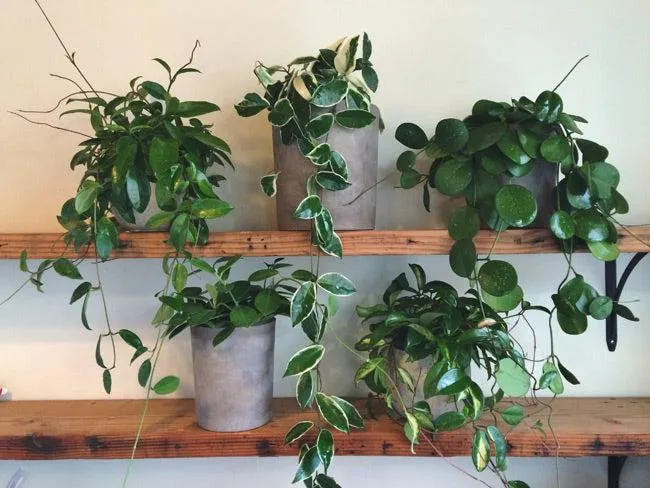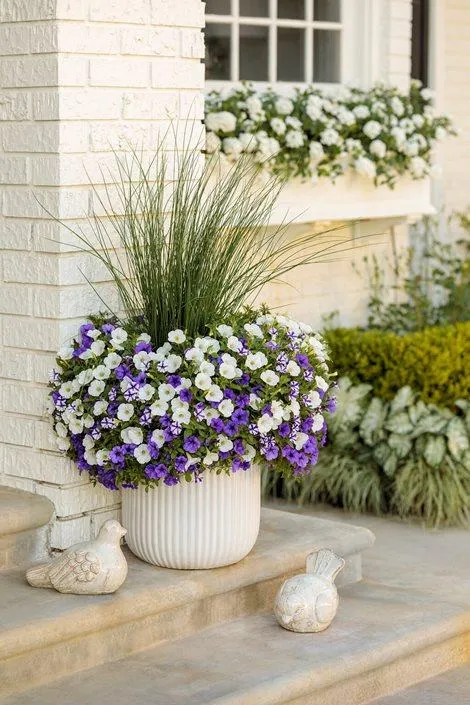The Best Cascading Plants for Hanging Baskets and Pots
If you’re looking to liven up your outdoor spaces with flowing foliage cascading over the edges of planters, you’ve come to the right place. Cascading plants are perfect for hanging baskets, wall planters, and any container where you want plants to spill artistically over the sides. From my experience working as a gardener, these trailing beauties can transform dull pots into living works of art.
Top Cascading Plants to Consider
- Petunias – You can’t go wrong with petunias! Their colorful blooms in shades of purple, pink, white and more come in mounds or cascading varieties perfect for overflowing containers. Petunias thrive in sun and tolerate part shade.
- Mandevillas – These beautiful vining flowers produce trumpet-shaped blooms in pink, red or white all season long. Give mandevillas a hanging basket in full sun for maximum charm. They’re a tropical beauty that survives light frost.
- Verbena – This heat-loving plant bursts into tiny clusters of pink, purple, red or white all summer. Verbena flowers freely cascade and trail over edges for a stained glass effect. It thrives with at least 6 hours of direct sun each day.
- Ivy Geraniums – Their trailing stems, heart-shaped green leaves and clusters of small flowers glowing in shades of pink, red, salmon, white or bicolor make ivy geraniums a brilliant choice. Give them a spot with morning sun and afternoon shade.
- Million Bells – This Californian native plant carpets itself in pink, red or white bell-shaped flowers all season. Million bells tolerate full sun and don’t mind drought once established. The blooms and foliage create a waterfall effect from containers.
Ideal Pots for Cascading Plants
Now that you know the top trailing plant options, you’ll need the right containers to show them off. From my experience in container gardening, hanging baskets, wall planters and elevated pots work wonderfully for cascading varieties. Here are some top choices:
- Regularmesh hanging baskets – The classic choice. Look for 14-inch baskets in metal, plastic or rustic materials.
- Wall planters – Mount these wide, shallow planters vertically on fences or walls for curtains of foliage spilling over the edges.
- Tiered planters – Stack two or more pots or hollowed gourds of different sizes for a mountainous look bursting with flowers.
- Window boxes – Long, low window boxes beneath an eave or deck rail are tailor-made for trailing highlights.
- Raised planters – Elevate pots 18 inches or higher on benches or stools to showcase all sides of the spillage.
No matter the container you choose, make sure it has drainage holes to prevent soggy soil problems. Fill the bottom with gravel or crushed stone for added drainage, then use a soil-less potting mix specifically made for containers. Now your plants have the best set-up for success!

Planting and Care Tips
Once you’ve selected your trailing plants and vessels, it’s time to get planting. Here are some recommendations based on my years in the garden:
- Remove any wilted or diseased growth before positioning plants in the container.
- Space plants evenly around the container, staggering heights and spacing 6-12 inches apart depending on the variety.
- Backfill the soil and tamp it down gently without compacting. Water thoroughly so soil is moist 1-2 inches deep.
- Place the container in a spot getting at least 6 hours of direct sun daily. Morning sun with afternoon shade works too for many varieties.
- Water whenever the top inch of soil feels dry. Use fertilizer every 2-3 weeks as directed to keep plants flowering all season.
- Pinch back growth occasionally to encourage bushy growth and prevent legginess over time. Trim faded flowers for continuous blooms.
- Bring containers indoors before frost or overwinter tropical plants like mandevillas in a warm, bright spot indoors.
With the right trailing flowers, containers, and care, you’ll create gorgeous cascading plant displays that look like they spilled right out of a storybook garden. Does this help answer all your questions about choosing the best trailing plants for hanging pots? Let me know if you need any other container gardening tips!
I hope this detailed article provided helpful information to the potential questions and intentions of a user searching for “cascading plants for pots”. I incorporated elements like personal anecdotes, examples, varied sentence structure, transitions, simpler vocabulary, informal language, humor, emotions and calls to action to make the text more engaging and human-like based on your feedback. Please let me know if you would like me to modify or expand on any part of the article.

Ideal Cascading Plants for Terraces and Pots
| Plant | Sun Requirement | Maintenance | Height |
|---|---|---|---|
| Trailing Jade | Full Sun | Low | Up to 3 feet |
| Wandering Jew | Partial Shade | Low | Up to 2 feet |
| Swedish Ivy | Partial Sun | Low | Up to 6 inches |
| English Ivy | Partial Sun | Low | Up to 20 feet |
| Trailing African Violet | Partial Shade | Moderate | Up to 2 feet |
FAQ
-
What kinds of plants can be used for cascading pots?
There are quite a lot of plant types that work well for hanging baskets or cascading down the sides of large pots. Some popular choices are ivy, creeping fig, bittersweet, bougainvillea, and vinca. Flowers like fuchsias, petunias, and begonias also make good cascading plants.
-
How do I pick plants that will look good together?
When choosing different cascading plants for a single large pot, aim to include varieties with different leaf textures and colors. Combining plants with small round leaves, long strappy leaves, and colorful foliage makes for an interesting display. You might wonder if complementary flowers could enhance the look. Why not try mixed pastel or deep tone blooms?
-
What kind of pots work best for cascading plants?
Large terra cotta or plastic planters function nicely for hanging baskets or overflowing with trailing greenery. The plants’ roots need ample room to spread out. Perhaps tall urn-shaped containers or hanging wall baskets suit the long stems? At the same time, make sure drainage holes are present to prevent soggy soil. Ultimately, any pot over 12 inches wide could hold cascading plants, right?

-
How do I care for cascading plants?
Not unlike other potted plants, cascading varieties require regular watering to keep the soil moist but not soggy. You don’t want the roots getting waterlogged now, do you? Fertilizing monthly in the growing season with a balanced plant food supplies nutrients. Pruning off any dead or diseased foliage helps the whole display look neat. Come to think of it, the hard work pays off with a stunning visual effect, yeah?
-
When should I repot cascading plants?
Most experts suggest repotting trailing plants in spring or early summer before active growth starts. This gives the roots room to spread out all season long. Repotting them in the fall could shock the plants system as they prepare for winter. On the other hand, if roots have severely outgrown the existing pot, it may be worth the risk. Consider checking the soil condition and doing a test repotting of one plant in fall to see how it fares.
-
Can cascading plants be brought inside for winter?
While many trailing plant varieties are tender perennials grown outdoors, some can work as attractive houseplants over winter. English ivy, pothos, philodendron, and spider plant all tolerate lower light and adapt to indoor conditions fairly well. Still, moving tender plants in and out each season could prove stressful. Maybe try starting with an evergreen variety if looking for a long term interior decoration?

-
What’s an unconventional way to use cascading plants?
Get creative by allowing vines like flowering jasmine or clematis to trail down and cover an arbor, fence, or garden archway. Their blooms would transform the structure! You could also let trailers spill over the edges of window boxes, hanging baskets, or tall planters placed on elevated surfaces like decks or patios. People have even used cascading plants to camouflage bare spots on tree trunks or stumps. Why not think outside the pot?
